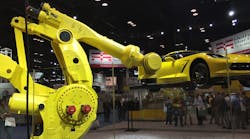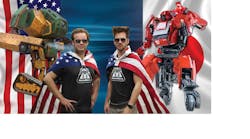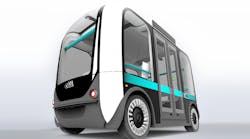For me, IMTS works as a kind of barometer for the state of the industry. The biannual show provides this clear glimpse of what manufacturers are actually doing and are actually interested in that you can’t find in any industry report or statistical analysis.
In 2012, for instance, fresh out of the recession, it was clear that manufacturers were there to buy. And buy they did.
Machine tools, automation gear, tools, bits, and CNCs. Attendees were on-hand to fully upgrade their shops to handle smarter, streamlined, more efficient manufacturing. These were the investments that finally got our country back on its feet.
In 2014, it was all about innovation. 3D printing, or additive manufacturing, hit the show in a big way, as did the first practical applications of the Industrial Internet of Things technologies. Software, in general, was king of the show.
This year, however, it was all about the robots.
And not just any robots: this year’s show featured a new fleet of smarter, friendlier, more flexible robots than we have ever seen at this scale before.
The collaborative founders were there in force, of course. Universal Robots’ collaborative arms and Rethink Robotics’ friendly bots were found all across the 1.37 million square feet of the place, showing off their cage-free maneuvers.
But this year, these robotics pioneers were joined by competitors from every major robot maker: FANUC, ABB, Yaskawa, Kuka—every robot producer has finally taken the collaborative leap, all of them doing complex CNC feeds, shuffling parts, inspecting jobs, and letting IMTS attendees touch, manipulate, and control them without need for training or safety fencing.
And it’s not just collaboratives that made the show this year. Boasting a new suite of sensors, software, and intelligent designs, high-powered, full-strength robots were there, showing off smart, flexible redesigns.
With these tools, even the big guys like FANUC’s yellow, car-wielding giants or Yaskawa’s ultra-high-speed machines are now more useful than ever.
Altogether, at least one member of this new generation of robots appeared in almost every booth, it seemed. They were integrated into machine tools, performing part delivery, changing tools heads on CNCs, scanning barcodes, doing autonomous quality checks, even doing the 3D printing in the Stratasys booth.
That’s what I took away from this year.
Additive is grown up. IoT is here and real. The machine tools are smarter and more capable than ever. But, what’s really going to change in the next two years is the robotic fleet behind it all.
Robots are coming. Robots are here. What that means for manufacturing—and the manufacturers—we still have to sort out.















